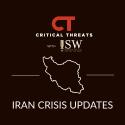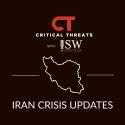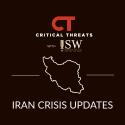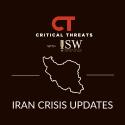Iran Crisis Update, November 10
Nov 10, 2022 - ISW Press
The ongoing protests are creating fractures within the Iranian hardliner camp. Parliament Speaker Mohammad Bagher Ghalibaf and his inner circle have clashed politically with other hardliners who have taken harsher stances against the protests, according to Iranian media. Ghalibaf and his inner circle have blamed these hardliners—specifically Saeed Jalili and others in the Stability Front party—for stoking unrest among disaffected Iranian youth. Jalili was the secretary of Iran’s Supreme National Security Council from 2007 to 2013. One parliamentarian reportedly close to Ghalibaf wrote an op-ed accusing parliamentarians close to Jalili of having inflexible and uncompromising views and calling media affiliated with the Islamic Revolutionary Guards Corps (IRGC) “harsh and violent” on October 25. Ghalibaf endorsed economic and sociopolitical reform in a parliamentary address on November 5, describing changes made within the parameters of the Islamic Republic as “legitimate and necessary.” Ghalibaf likely seeks to use such promises of reform to placate protesters. Ghalibaf will not likely support meaningful political reform, however.









